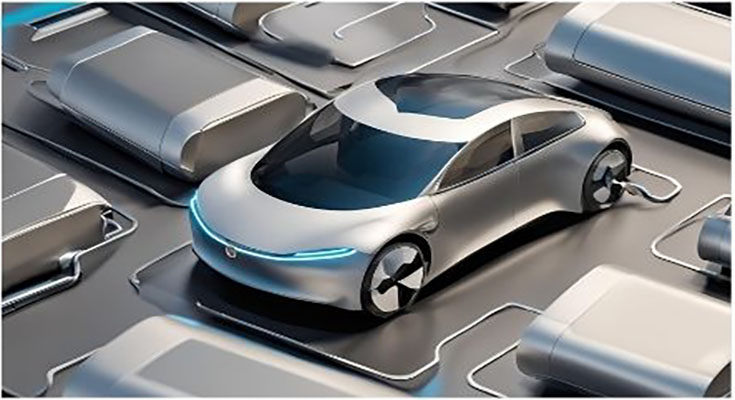As electric vehicles (EVs) continue to gain traction in the automotive market, the quest for better battery technology remains a central focus. Among the most promising advancements on the horizon is the solid-state battery. This innovative technology has the potential to revolutionize the electric vehicle industry by addressing some of the key limitations of current lithium-ion batteries. This article explores what solid-state batteries are, their advantages and challenges, and their potential impact on the future of electric cars.
What Are Solid-State Batteries?
Solid-state batteries are a type of battery technology that replaces the liquid or gel electrolyte found in traditional lithium-ion batteries with a solid electrolyte. This solid electrolyte can be made from a variety of materials, including ceramics, glass, or solid polymers. The main components of a solid-state battery include:
- Solid Electrolyte: The core element that facilitates the movement of ions between the battery’s anode and cathode.
- Anode: The negative electrode where oxidation occurs.
- Cathode: The positive electrode where reduction takes place.
The solid-state design offers several distinct advantages over traditional lithium-ion batteries, particularly for applications in electric vehicles.
Advantages of Solid-State Batteries
Increased Energy Density
One of the most significant benefits of solid-state batteries is their potential for higher energy density. Because the solid electrolyte can operate at higher voltages and temperatures, solid-state batteries can store more energy per unit of weight or volume compared to conventional lithium-ion batteries. This means that electric vehicles could achieve longer driving ranges on a single charge, addressing one of the primary concerns of EV users—range anxiety.
Enhanced Safety
Safety is a critical consideration for any battery technology. Solid-state batteries offer improved safety features due to their solid electrolyte. Unlike liquid electrolytes, which can be flammable and prone to leakage, solid electrolytes are less likely to catch fire or cause hazardous leaks. This reduction in risk makes solid-state batteries a safer option for use in vehicles.
Longer Lifespan
Solid-state batteries tend to have a longer cycle life than traditional lithium-ion batteries. The solid electrolyte is less prone to degradation over time, which means that the battery can maintain its capacity and performance for a more extended period. For electric vehicles, this translates to fewer battery replacements and reduced long-term costs.
Faster Charging Times
The ability of solid-state batteries to handle higher voltages can also enable faster charging times. While current lithium-ion batteries can take hours to fully charge, solid-state batteries have the potential to significantly reduce this time, making electric vehicles more convenient and practical for everyday use.
Challenges and Limitations
Despite their many advantages, solid-state batteries face several challenges that must be addressed before they can become a mainstream technology for electric vehicles.
High Production Costs
The manufacturing process for solid-state batteries is currently more complex and costly than that for traditional lithium-ion batteries. The materials used for solid electrolytes can be expensive, and the production techniques are still being refined. As a result, solid-state batteries are not yet cost-competitive with existing technologies.
Scalability
Scaling up the production of solid-state batteries to meet the demands of the automotive market presents logistical and technical hurdles. The technology is still in the development phase, and significant investments in research and production infrastructure are required to make it viable for mass-market adoption.
Material and Performance Issues
Research into solid electrolytes is ongoing to find materials that offer both high performance and stability. Some solid-state battery prototypes have faced issues with material compatibility, low conductivity, and poor performance at low temperatures. These challenges need to be overcome to ensure that solid-state batteries can perform reliably in real-world conditions.
Current Developments and Future Outlook
Many automotive manufacturers and technology companies are actively investing in solid-state battery research. Companies such as Toyota, BMW, and QuantumScape are leading the charge, with ambitious plans to bring solid-state batteries to market within the next few years. As research progresses and production methods improve, the cost of solid-state batteries is expected to decrease, making them a more feasible option for electric vehicles.
For resume, solid-state batteries represent a significant leap forward in battery technology, offering the potential for higher energy density, improved safety, longer lifespan, and faster charging times. While there are challenges to overcome, ongoing research and development efforts are steadily addressing these issues. As the technology matures, solid-state batteries could become a game-changer for electric vehicles, paving the way for more efficient, reliable, and accessible electric transportation solutions.
The future of solid-state batteries holds promise for transforming the electric vehicle market and accelerating the transition to a more sustainable automotive industry. With continued innovation and investment, solid-state batteries could soon become a cornerstone of next-generation electric vehicles, reshaping the way we think about and experience electric mobility.





